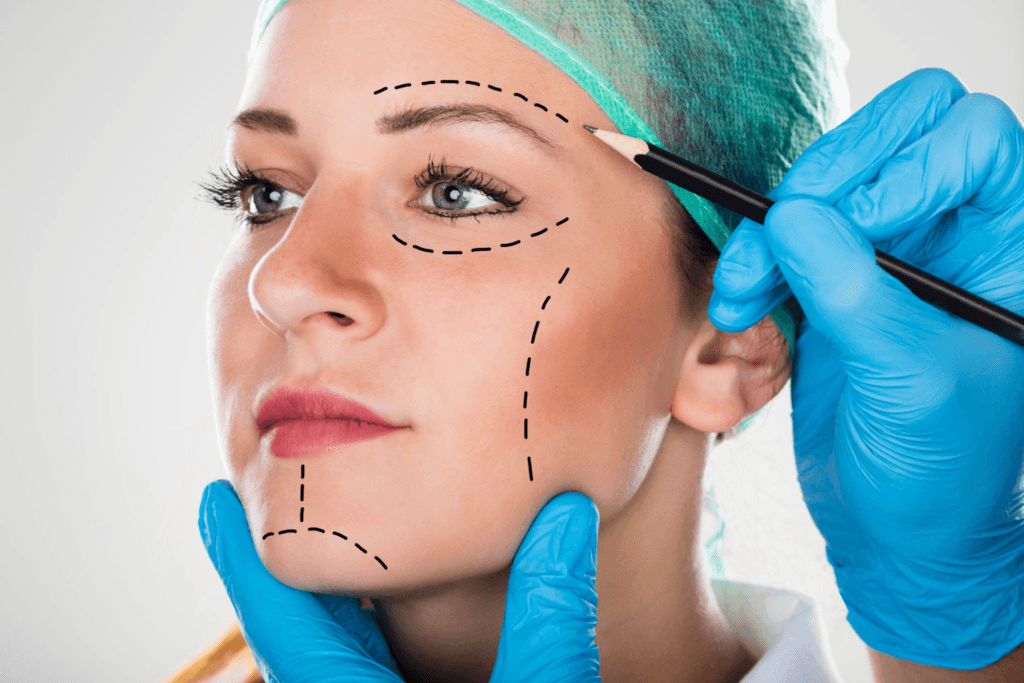Facelift surgery, particularly in a popular medical tourism destination like Antalya, requires careful consideration of the recovery process and aftercare recommendations. Understanding these aspects can significantly enhance the outcome and overall experience.

جدول المحتويات
Why Antalya for Facelift Surgery?
Antalya is renowned for its advanced medical facilities and skilled surgeons, making it an ideal location for facelift procedures. The city’s combination of high-quality medical care and beautiful surroundings offers a unique opportunity for recovery.
Importance of Understanding the Recovery Process
The recovery process after a facelift is crucial for achieving optimal results. It involves several stages, each requiring specific care and attention. By understanding what to expect during recovery, patients can better prepare and ensure a smoother healing process.
Aftercare Recommendations
Post-operative care is essential for minimizing complications and promoting healing. This includes following the surgeon’s instructions, taking prescribed medications, and attending follow-up appointments. Proper aftercare can significantly reduce the risk of infections and other issues, ensuring a successful recovery.
Understanding the Facelift Procedure
A facelift, also known as rhytidectomy, is a surgical procedure designed to improve visible signs of aging in the face and neck. It addresses issues such as sagging skin, deep creases, and the loss of muscle tone that can create jowls and a double chin.
Types of Facelifts
There are several types of facelifts, each tailored to address specific areas of concern:
- Traditional Facelift: This is the most comprehensive procedure, addressing moderate to advanced aging signs in the midface and neck.
- Mini Facelift: A less invasive option that targets the lower part of the face with smaller incisions and shorter recovery time.
- Mid Facelift: Focuses on the cheek area to lift and rejuvenate the midface region.
- Lower Facelift: Specifically addresses the jawline and neck, ideal for those with significant jowling and neck laxity.
- Thread Lift: A minimally invasive procedure using threads to lift and tighten the skin, with minimal downtime.
Comparing Facelift Types
| Facelift Type | Incision Size | وقت التعافي | Best For |
|---|---|---|---|
| Traditional | Large | 2-4 أسابيع | Advanced aging signs |
| Mini | Small | 1-2 اسبوع | Mild to moderate aging signs |
| Mid | واسطة | 1-3 أسابيع | Midface rejuvenation |
| أدنى | واسطة | 2-3 اسابيع | Jowling and neck laxity |
| Thread | Minimal | 1 اسبوع | Minimal aging signs |
Pre-Operative Preparation
Proper pre-operative preparation is crucial for a successful facelift procedure. Here are some key steps involved:
- التقييم الطبي: A thorough medical evaluation is conducted to ensure the patient is a suitable candidate for surgery. This includes a review of medical history, current medications, and any allergies.
- Lifestyle Adjustments: Patients are advised to stop smoking and avoid certain medications and supplements that can increase bleeding risk, such as aspirin and anti-inflammatory drugs.
- Skin Care: Preparing the skin with a proper skincare regimen can enhance the results of the facelift. This may include using specific creams or undergoing preliminary treatments like chemical peels.
- Nutritional Support: Maintaining a balanced diet rich in vitamins and nutrients can aid in the healing process. Some surgeons may recommend specific supplements to support recovery.
- Emotional Preparation: Understanding the emotional aspects of the procedure is important. Patients should have realistic expectations and understand the recovery process.
,
The Recovery Process After a Facelift in Antalya
Understanding the facelift recovery process is crucial for anyone considering this procedure. The recovery journey involves several stages, each with its own set of guidelines and expectations. This section will guide you through the immediate post-operative care, the first week of recovery, subsequent weeks, and common side effects.
Immediate Post-Operative Care
Immediately after your facelift procedure, you will be moved to a recovery room where medical staff will monitor your vital signs. Here are some key aspects of post-operative care:
- Your face will be bandaged to minimize swelling and bruising.
- You may have drainage tubes placed to remove excess fluid.
- You will be given pain medication to manage any discomfort.
It is essential to have someone accompany you home and stay with you for the first 24 hours.
The First Week of Recovery
The first week of your facelift recovery is critical. During this time, you can expect the following:
- Swelling and bruising will be at their peak.
- You should rest with your head elevated to reduce swelling.
- Avoid any strenuous activities that could increase blood flow to your face.
- Follow your surgeon’s instructions for cleaning incisions and applying ointments.
Most patients report that the discomfort is manageable with prescribed medication.
Subsequent Weeks of Recovery
As you progress through the following weeks, you will notice gradual improvements. Here is what to expect during the subsequent weeks of your recovery timeline:
Weeks 2-3
Swelling and bruising will begin to subside. You may still experience some numbness or tightness, which is normal. You can gradually resume light activities but avoid anything too strenuous.
Weeks 4-6
Most visible signs of surgery should have faded. You can return to most of your normal activities, including exercise. However, it is still important to protect your face from sun exposure and avoid activities that could cause impact to your face.
Common Side Effects
It is normal to experience certain side effects during your facelift recovery. Some common side effects include:
- التورم والكدمات: These are typical and usually peak within the first 3-4 days.
- خدر: Temporary numbness around the incision sites is common and usually resolves within a few weeks.
- Tightness: A feeling of tightness in the face and neck is normal and will gradually improve over time.
- الندبات: Incisions will leave scars, but they are usually well-hidden and will fade over time.
| Side Effect | Duration | Management |
|---|---|---|
| التورم والكدمات | Up to 2 weeks | Rest, elevation, cold compresses |
| Numbness | Up to 6 months | Time and patience |
| Tightness | Up to 3 months | Gentle massage, time |
| ندبات | Up to 1 year | Silicone sheets, sun protection |

Immediate Post-Procedure Care
Immediate post-procedure care is crucial for ensuring optimal healing and minimizing complications. Here are some key steps to follow:
- Keep the affected area clean and dry to prevent infection.
- Avoid strenuous activities that could strain the area.
- Follow your healthcare provider’s instructions regarding any prescribed medications.
Medications and Pain Management
Managing pain and inflammation effectively is essential for a comfortable recovery. Your doctor may prescribe the following medications:
- Antibiotics: To prevent infections.
- Pain relievers: Such as acetaminophen or ibuprofen to manage discomfort.
- Anti-inflammatory drugs: To reduce swelling and inflammation.
Always take your medications as prescribed and consult your healthcare provider if you experience any adverse effects.
Lifestyle Adjustments for Better Recovery
Making temporary lifestyle adjustments can significantly enhance your recovery process:
- Maintain a balanced diet rich in nutrients to support healing.
- Stay hydrated by drinking plenty of water.
- Get adequate rest and avoid stressful situations.
- Gradually return to normal activities as advised by your healthcare provider.
Follow-Up Appointments and Monitoring
Regular follow-up appointments are essential for monitoring your progress and ensuring that healing is on track:
- Attend all scheduled follow-up appointments.
- Inform your healthcare provider of any unusual symptoms or concerns.
- Keep a record of your recovery progress to discuss during your appointments.
الرعاية والصيانة طويلة الأمد
Long-term care is vital for maintaining the benefits of your procedure and preventing future issues:
- Follow a healthy lifestyle, including regular exercise and a balanced diet.
- Avoid habits that could negatively impact your health, such as smoking or excessive alcohol consumption.
- Stay in touch with your healthcare provider for ongoing support and advice.
Our Surgeons and Affiliated Professionals
في Surgyteam، نحن فخورون بالتعاون مع فريق متميز من المتخصصين الطبيين، حيث يتمتع كل منهم بخبرة واسعة والتزام بالرعاية التي تركز على المريض.
- د. محمد فاتح أوكياي (دكتور في جراحة التجميل والترميم): أخصائي جراحة التجميل والترميم. مؤسس مشارك في Surgyteam. حاصل على شهادة FEBOPRAS.https://www.dr-mfo.com/)
- د. سلجوق يلماز: أخصائي جراحة التجميل والترميم والتجميل.https://drselcukyilmaz.com)
- الدكتور إبرو أوكياي: أخصائي الأمراض الجلدية. (https://drebruokyay.com/)
- د. مصطفى كلش: أخصائي جراحة التجميل والترميم والبلاستيك.https://www.medstar.com.tr/doktorlar/mustafa-keles/)
- الدكتور بوراي يوسيل: أخصائي جراحة التجميل والترميم والتجميل.https://borayucel.com/)
- د. سيبل أتالاي: أخصائية جراحة التجميل والترميم والتجميل. عيادة حاصلة على ترخيص السياحة الصحية الدولية.https://www.sibelatalay.com.tr/)
- د. ميرت ميرال: أخصائي جراحة التجميل والترميم والتجميل. حاصل على شهادة EBOPRAS.https://mertmeral.com/)
لمعرفة المزيد عن Surgyteam وكيف يمكننا مساعدتك، يرجى زيارة موقعنا الإلكتروني:
https://surgyteam.com/
إخلاء مسؤولية: هذه التدوينة لأغراض إعلامية فقط، ولا تُعدّ نصيحة طبية. التكاليف تقديرية وقابلة للتغيير. استشر دائمًا طبيبًا مؤهلًا للحصول على نصائح وعلاجات شخصية.



